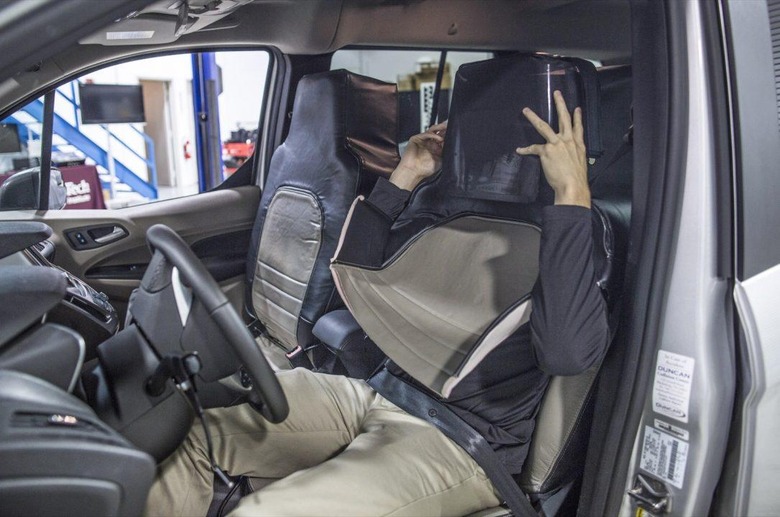Ford Disguised A Man As A Seat To Prove A Self-Driving Car Point
Believe the autonomous concept cars that have proliferated in recent years, and the exterior of your self-driving vehicle will rival the Jumbotron what with all the displays and screens it's covered in. Communicating exactly what a driverless vehicle is intending to do with other road-users and pedestrians is one of the ongoing headaches automakers and researchers are facing, with answers ranging from color-changing hubcaps to laser beams. It's a question that pushed Ford and Virginia Tech Transportation Institute to borrow an old trick from Knight Rider, of all places.
Last month, the two sparked driverless car speculation in North Virginia, after what appeared to be an autonomous van was spotted on public streets. Such testing isn't unusual, of course, but what set the vehicle apart was that it appeared to have no human backup driver behind the wheel. That remains a safety proviso that all autonomous testing is required to comply with.
Turns out, the "driverless" van wasn't autonomous at all. Instead, Ford and VTTI took a low-tech approach to making it look that way, disguising a human driver in a fake car seat. It's not a new idea, either: the makers of David Hasselhoff series Knight Rider used something similar for their self-driving car, KITT.
The fake-out was because the tech under trial wasn't the Transit Connect van itself, but the way it tried to communicate with the rest of the world. Without the non-verbal signals – waving pedestrians across the road, or gesturing to other drivers that they're clear to turn – human operators can give, the prototype turned to other forms of interaction. That was built around a light bar integrated into the upper windshield.

Why lights, rather than something more data-rich as we've seen in other concepts? Ford says it dismissed text because that would require reading ability in that language, and symbols because they're generally poorly understood. Instead, three light patterns were implemented.
Two white lights moving side to side was used to suggest the vehicle was about to come to a complete stop. A solid white light showed it was in fully autonomous mode. Finally, rapidly-blinking white lights warned that it was about to move off.
Ford and VTTI fitted the car with a bevy of cameras and then drove it over 1,800 miles around multiple locations around Arlington, VA. Over 150 hours of video data was collated, and that will now be processed to see how pedestrians, cyclists, and other motorists reacted. "This data will be valuable to understanding if other road users change their behaviors in response to self-driving vehicles and the signals they employ," Ford says.
